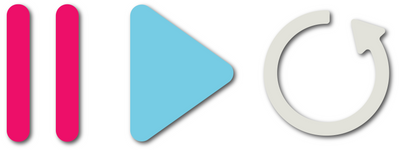Mid/Side Processing with Ableton Live's EQ Eight
Mid/Side processing is a clever technique which, once learned, will somehow find its way into multiple mixes. Mid/Side processing's strength lies in making subtle changes to the stereo image of your tracks, and luckily for us, Ableton Live makes this effect easy to achieve.
Mid/Side processing works by decoding a stereo signal into two components. The 'Mid' channel contains just the information that appears in both the left and right channels, while the 'Side' channel contains all the information that differs between the left and right channels. Once encoded into M/S, these two signals can be processed completely separately, before being converted back to the conventional L/R stereo mode.
The easiest way to demonstrate the Mid/Side processing technique is to use Ableton Live's built in EQ Eight. EQ Eight might already be a staple in your productions, and if not, you're definitely missing out. It's a great EQ device with eight bands, six filter types, and a scale function that allows you to adjust the gain in all bands at once. The icing on the cake however lies in the often overlooked 'Mode' parameter.
EQ Eight can work in three distinct modes.
The first mode is the default Stereo.
The second is 'L/R' mode, in which the left and right channels can each have their own EQ settings. In this mode, you can try to boost the high end frequencies in one channel while reducing the same frequencies in the other. This will give you the same effect as panning only the high end frequencies of a stereo signal while leaving the low frequencies centered, which is much more subtle than simply panning the entire signal left or right.
The third mode is the 'M/S' mode. There are some great uses for a Mid/Side equalizer. It's important to remember that this mode lets you equalize the sum and difference portions of your signal completely separately. To demonstrate what this means, let's listen to the two elements in isolation. First, open up a previous track you've worked on, or drag in your favorite track into your DAW. Put an EQ Eight on the Master channel, and make sure the 'M/S' mode is selected.
Let's first listen to only the Mid portion of the song (the summed mono left and right signals). In the Edit field, maker sure that 'S' is showing, indicating that we are editing the Sides signal. Make sure that Filter 1 is enabled with the Low Cut mode selected, and bring the Frequency all the way up to 22kHz. Doing this will effectively cut out all of the Sides, leaving only the Mids. What you hear now will only be the signal that is present equally in both the left and right channels.
Now let's reverse things and listen to only the Sides signal. Switch the Edit mode to 'M' from 'S' and now you'll be listening to only the Side information.
Let's now move on to some practical tips for mixing your tracks.
It's accepted as standard practice that low-frequency instruments such as Kick Drums and Bass should be kept in the center of the stereo spectrum. There are a couple of reasons for this. Firstly, the human brain finds it very difficult to locate the source of low frequencies, so it's fairly pointless to pan them anyway. The second reason takes us back in time, to the days of vinyl, where if the bass frequencies are heavily mismatched in the left and right channels, the needle can potentially bounce right out of the groove, causing skipping.
Let's say we have a huge synth bass that has not only a lot of sub-bass energy, but also a lot of additional harmonics created by a stereo distortion effect. Our mix will probably be more successful if we can restrict the stereo component of this effect to the higher frequencies. Start by adding an EQ Eight and enable M/S mode. In the Edit field, make sure that 'S' is showing, indicating that we are editing the Sides signal. Now ensure Filter 1 is enabled with the Low Cut band set, then bring the Frequency up to about 700Hz. By doing this, we have effectively filtered out any Sides signal below 700Hz, leaving only the Mid signal. This will, in effect, make the bass mono below 700Hz, while retaining the nice stereo effect on the top end.
Another creative way to use EQ Eight is to add Air and Space. Start by opening up EQ Eight on either your master channel or reverb channel, and gently boost the low-mids and high frequencies in only the Sides channel. This will enhance the stereo space of your track without muddying up the Mid channel. Another way to achieve this is to scoop some of the mid-range frequencies form the Mid channel on your reverb return.

Leave a comment